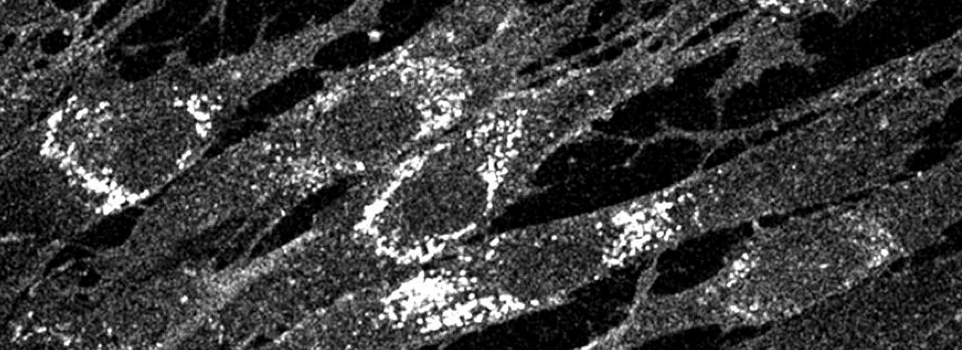IFITM3 and CD225 Proteins

Influenza epidemics produce significant morbidity and mortality. While the best protection is vaccination, its efficacy varies across seasons and is limited in the setting of a pandemic. Therefore, research to discover new anti-influenza A virus (IAV) strategies would be useful.
Our Research
IAV replication begins with viral hemagglutinin (HA) binding to the cell surface, eliciting endocytosis. Endocytosed viruses traffic to the late endosomes where acidification triggers HA-mediated fusion. Fusion transitions from a hemifusion intermediate (resulting in host-viral membrane mixing), into a fusion pore through which the viral genomes enter the cytosol.
Using a genetic screen, we identified the ubiquitously expressed IFITM family members, IFITM1, 2 and 3, as capable of restricting IAV including clinical isolates and pandemic H1N1 strains. IFITM3 accounts for 50-80% of interferon’s inhibition of IAV infection in vitro. The IFITMs inhibit infection by the flaviviruses, filoviruses, and the SARS coronavirus. The IFITMs modestly block VSV-G and HIV-1 fusion, but do not impede MLV or the arenaviruses. Therefore with the noted exceptions the IFITMs inhibit all three classes of viral fusion proteins (class I: IAV, HIV-1, class II: DENV and class III: VSV-G). The IFITMs all possess an N-terminal intramembrane domain (IM) and a C-terminal trans-membrane domain (TM), separated by a conserved intracellular loop (CIL). The IM and CIL regions are conserved between the IFITMs and a large group of membrane proteins representing the CD225 family. There are 13 human CD225 members.
Our Results
We have shown that Ifitm3-/- mice suffer significant morbidity upon IAV infection as compared to WT mice. Furthermore, patients homozygous for an allelic variant of IFITM3, rs12254-C, are more prone to develop severe influenza. These are significant results because they demonstrate that IFITM3 is playing an important protective role in vivo. We have found that IFITM3 arrests IAV after hemifusion, thereby preventing full fusion and leading to the trapped virus being degraded in the lysosome.
Furthermore we have found that IFITM1 can decrease the fluidity of the host cell membrane, suggesting a possible mechanism for blocking viral fusion. In keeping with this, we have demonstrated that the anti-mycotic Amphotericin-B (AmphoB), which increases membrane fluidity, can overcome IFITM3-mediated restriction. We have shown that IFITM3 resides in late endosomes and lysosomes that contain Rab7 and/or LAMP1. Our studies and those of others have found that inhibition of IAV infection is dependent on the correct localization of IFITM3 to the late endosomes and lysosomes, the site of IAV fusion.
We are currently using multiple approaches to determine the mode of action of the IFITMs in both cell biology and viral inhibition, as well as investigating the roles of the other CD225 proteins in human health and disease.
Let's have the next big breakthrough together!
